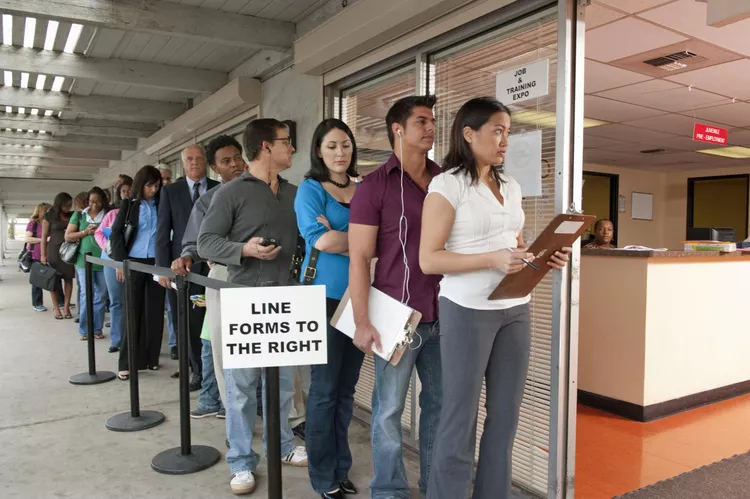Unemployment benefits are available to anyone who was laid off and is actively looking for work. Those who were fired or resigned aren’t typically eligible. However, during the coronavirus pandemic, guidelines were relaxed to make self-employed and part-time workers eligible for the first time. Other provisions offer flexibility for parents forced to leave employment to care for their children attending online school.
Unemployment benefits are administered by each state. They average $387 a week for 26 weeks, but they vary widely based on location and prior earnings.1
The federal government funds unemployment benefits from payroll taxes received from employers. Unemployment benefits were created by the Social Security Act of 1935 to allow the millions who had lost jobs due to the Great Depression of 1929 to pay for food, clothing, and shelter.
2021 Unemployment Extension
Extra unemployment benefits were extended through September 6, 2021, thanks to the American Rescue Plan Act (ARPA). That marked the third extension of these benefits since the outbreak of the coronavirus pandemic first created record-high unemployment rates. ARPA also contained other stimulus provisions, including direct stimulus payments to Americans and an increased Child Tax Credit.
The benefits extended in 2021 were somewhat different than the ones offered in March 2020. ARPA extended unemployment benefits as they were at the end of 2020. This means the federal government contributed an additional $300 per week on top of state benefits. At the beginning of the pandemic, the federal government offered an additional $600 per week.2
2020 Unemployment Extension
On March 27, 2020, the Coronavirus Aid, Relief, and Economic Security Act (CARES Act) was enacted. The $2 trillion aid package provided financial aid to families and businesses impacted by the COVID-19 coronavirus pandemic. It also marked the first time unemployment benefits had been extended beyond the standard 26 weeks since 2013.
Those receiving unemployment insurance received an additional $600 a week for four months. That was in addition to what states already pay. The time someone could claim unemployment was also extended.
The CARES Act also extended unemployment insurance benefits to the self-employed and independent contractors. The federal government provides temporary full funding for the first week of unemployment.3
In August 2020, the unemployment benefits were extended, but the amount of additional federal payments dropped to $300.4
Unemployment Extensions Prior to 2020
Before the COVID-19 pandemic, benefits were extended due to the Great Recession.
2013 Extension
Congress kept the extension until the end of the calendar year.5 It was part of the negotiations that kept the economy from falling off the fiscal cliff.
2012 Extension
The Middle-Class Tax Relief and Job Creation Act of 2012 began phasing out the benefits.6
2010 Extension
Unemployment rates were stuck at 9.5%, and 14.6 million people were unemployed.7 Congress reluctantly passed the Restoration of Emergency Unemployment Compensation Act of 2010. Despite the severity of the unemployment situation, some legislators opposed adding $34 billion to the national debt.8 The most vocal was Representative Paul Ryan, R-WI, who said, “The American people are fed up with the relentless push to spend money we don’t have, add to our crushing burden of debt, and evade accountability for the dismal results.”9 Fortunately, for the long-term unemployed, the benefits were extended.
This Act extended benefits for up to 99 weeks.10 Not everyone qualified for the full extension. The benefits were arranged according to four tiers. The first tier gave 20 weeks of benefits. Tier 2 allowed another 14 weeks. Tier 3 applied to states where the unemployment rate was 6% or higher. The unemployed in those states received another 13 weeks. States in which the unemployment rate was 8.5% or higher received Tier 4 benefits of six additional weeks.11
2009 Extension
In March 2009, President Obama extended unemployment benefits by 33 weeks as part of the American Recovery and Reinvestment Act.12 This was to help the 13.2 million people suffering from the 8.5% unemployment rate.13
In November, as the unemployment rate climbed to 10%, unemployment benefits were extended for another 14 weeks. There were 15.4 million people unemployed.14 This was down just 300,000 from the all-time high of 15.7 million the previous month.15 States with unemployment rates at 8.5% or higher received an additional six weeks of benefits.11
Disadvantages of Extended Unemployment Benefits
The downside of unemployment benefits is that paying them can, like any other government spending, increase budget deficits and add to the government debt. How can this hurt the economy? Investors may become worried that the government can’t pay back its debt.
Demand falls for U.S. Treasury bonds, which are used to finance government spending. This makes interest rates rise, increasing the cost of borrowing for everyone. Most loans peg their interest rates to the yield on Treasurys.
Advantages of Extended Unemployment Benefits
Paying benefits has a similar, but even more direct effect as that of lower interest rates. Benefit payments give the unemployed more money to spend, increasing demand.
Most government spending takes the form of job programs, in which the government hires workers and businesses directly to build things or provide services. Benefits eliminate the middleman. In doing so, benefits put money directly into the pockets of those who will spend it right away. This is why many feel unemployment benefits are the best stimulus.
Frequently Asked Questions (FAQs)
When did the unemployment extensions end?
Unemployment is run by the states, so the exact ending date for extensions depended on when the state pays benefits. In California, unemployment assistance created by the CARES Act ended on September 4, 2021.16 In New York, they ended on September 5, 2021.17
How do I file for unemployment?
Check on your state government’s website for more information on how to file for unemployment benefits. For example, in New York, residents file unemployment claims online with the state’s Department of Labor.











